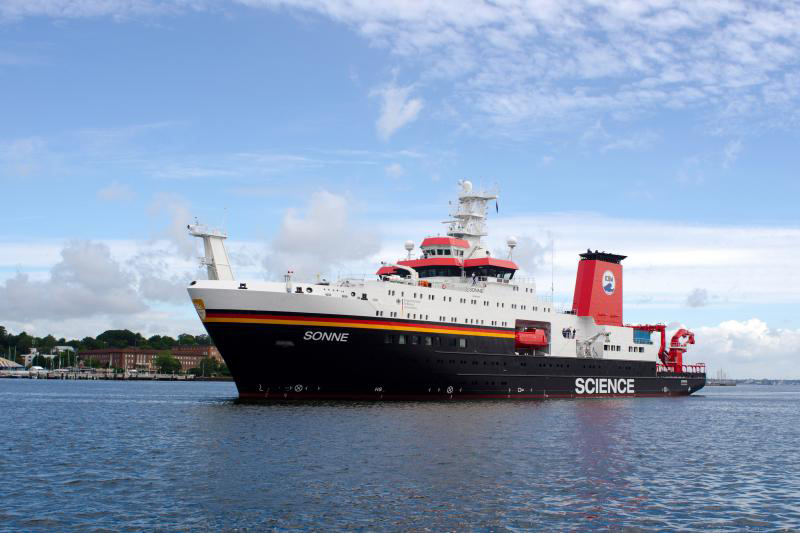SONNE SO252
- Area:
- Bismarck Sea
- Time:
-
05.11.2016 - 18.12.2016
- Institution:
- GEOMAR
- Chief scientist:
- Christian Berndt
Large volcanic debris flows associated with volcanic island flank collapses may cause devastating tsunamis as they enter the ocean. Computer simulations show that the largest of these volcanic debris flows on oceanic islands such as Hawaii or the Canaries can even cause ocean-wide tsunamis. However, the magnitude of these tsunamis is subject to on-going debate as it depends particularly on landslide transport and emplacement processes. A robust understanding of these factors is thus essential in order to assess the hazard of volcanic flank collapses. With a collapsed volume of about 5 cubic kilometer the 1888 Ritter Island flank collapse in the Bismarck Sea is the largest in historic times and represents an ideal natural laboratory for several reasons: (I) The collapse is comparatively young and the marine deposits are clearly visible, (II) the pre-collapse shape of the island is historically documented and (III) eyewitness reports documenting tsunami arrival times, run-up heights and inundation levels on neighboring islands are available. We will use these favourable circumstances to map the landslide deposit and calculate back the tsunami and the flank collapse. By matching the observed tsunami heights to the models we will be able to determine the critical unknown parameters of the slope collapse such as velocity and acceleration. These parameters can then be used for hazard assessments elsewhere in the world.



